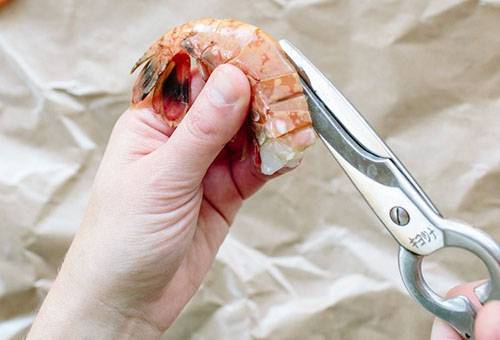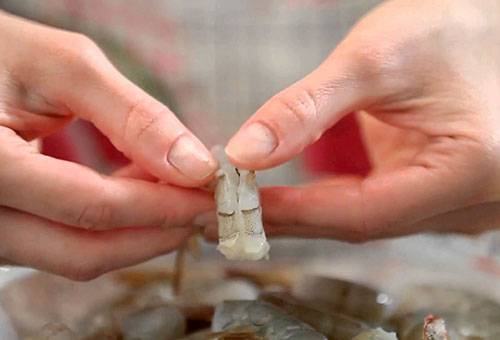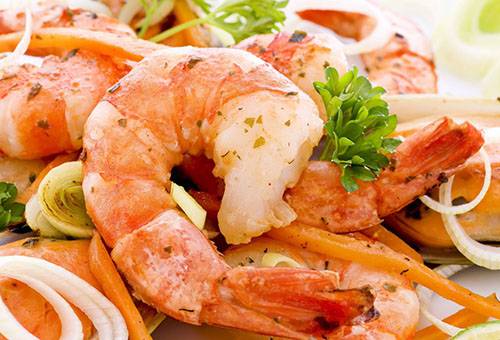How to properly peel fresh, boiled and frozen shrimp at home?
Not everyone knows how to peel shrimp quickly, efficiently and correctly. But it is technological violations in this procedure that are often the cause of dissatisfaction with the finished dish, especially due to the presence of an unpleasant aroma or a specific taste.
Purchasing unpeeled shrimp and processing them yourself helps prevent bacteria, dust particles and foreign components from getting into the meat during transportation and packaging (no one can guarantee that this was done correctly). Before peeling shrimp, experts recommend boiling them directly in their shells. If products are boiled in their shell, this allows them to retain all the juice and the maximum amount of nutritional components.

Rules for cleaning fresh and boiled shrimp
If the conditions of the recipe require preliminary purification of the main ingredient, then the best option would be to purchase fresh shrimp. In this case, they can be cleaned in a few minutes by performing the following manipulations:
- First, we cut the chitinous shell with very sharp scissors, being careful not to damage the meat. We cut from the head towards the tail, carefully removing the plates. They may not differ in color from meat, so we act slowly and thoroughly.
Advice
When working with boiled shrimp, it is recommended to have a bowl of warm water.This will allow you to quickly get rid of sticky legs, scales, intestinal wreaths and other elements that are always in the way.
- Next, you need to remove the intestinal vein. If you do this correctly, it will not come off and will not fall apart into several parts. In small shrimps the formation is very fragile, it is better to cut it out. In large ones, you can simply pull.
- If the recipe allows, then you should not tear off the head; it contains too many nutritional components, which during heat treatment pass into the meat and give it a soft and tender texture.
Boiled shrimp are the easiest to clean. The specimen is taken by the head and turned belly up. First, remove the paws with the eggs correctly, then the head. After this, we take the carcass by the tail and carefully clean off the remaining shell. If necessary, remove the tail if the recipe does not require the presence of this convenient holder.
Advice
Families who prefer to include shrimp in their diet regularly are advised to purchase special tools for cutting them. This will significantly facilitate the processing of ingredients and will preserve their appetizing appearance.
Features of the approach to frozen product
Before peeling frozen shrimp, rinse them thoroughly under running cool water. Then place them on a paper towel and dry slightly. Place the still frozen but clean ingredients in a dry deep bowl and sprinkle them with coarse salt. We wait a few minutes and begin the process.
- Place the product under running cool water and rinse until completely defrosted.
- Then we cut the shell and carefully remove the plates, not forgetting the legs of the shrimp. When working with large specimens, you need to act carefully.Frozen shrimp are not easy to peel without tearing pieces of meat from the carcass.
- Next, you need to treat the section with the intestinal vein. If defrosting is not complete, this element will tear and leave marks on the meat.
- After all the manipulations, the products must be rinsed well again under running water, placed on a wire rack, and allowed to drain. There is no need to crush the carcasses; they will lose their attractiveness. We blot the ingredients with paper towels and use as intended.
If you clean shrimp using the appropriate method, you can expect to prepare a tasty, flavorful and safe dish. With just a little practice, any of the listed approaches will be easy.


I tried peeling fresh shrimp, cutting them with small scissors. This makes cleaning much easier.